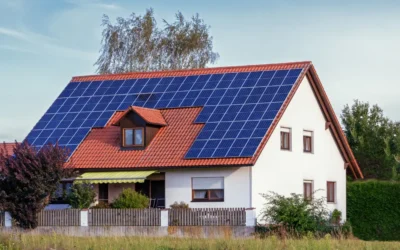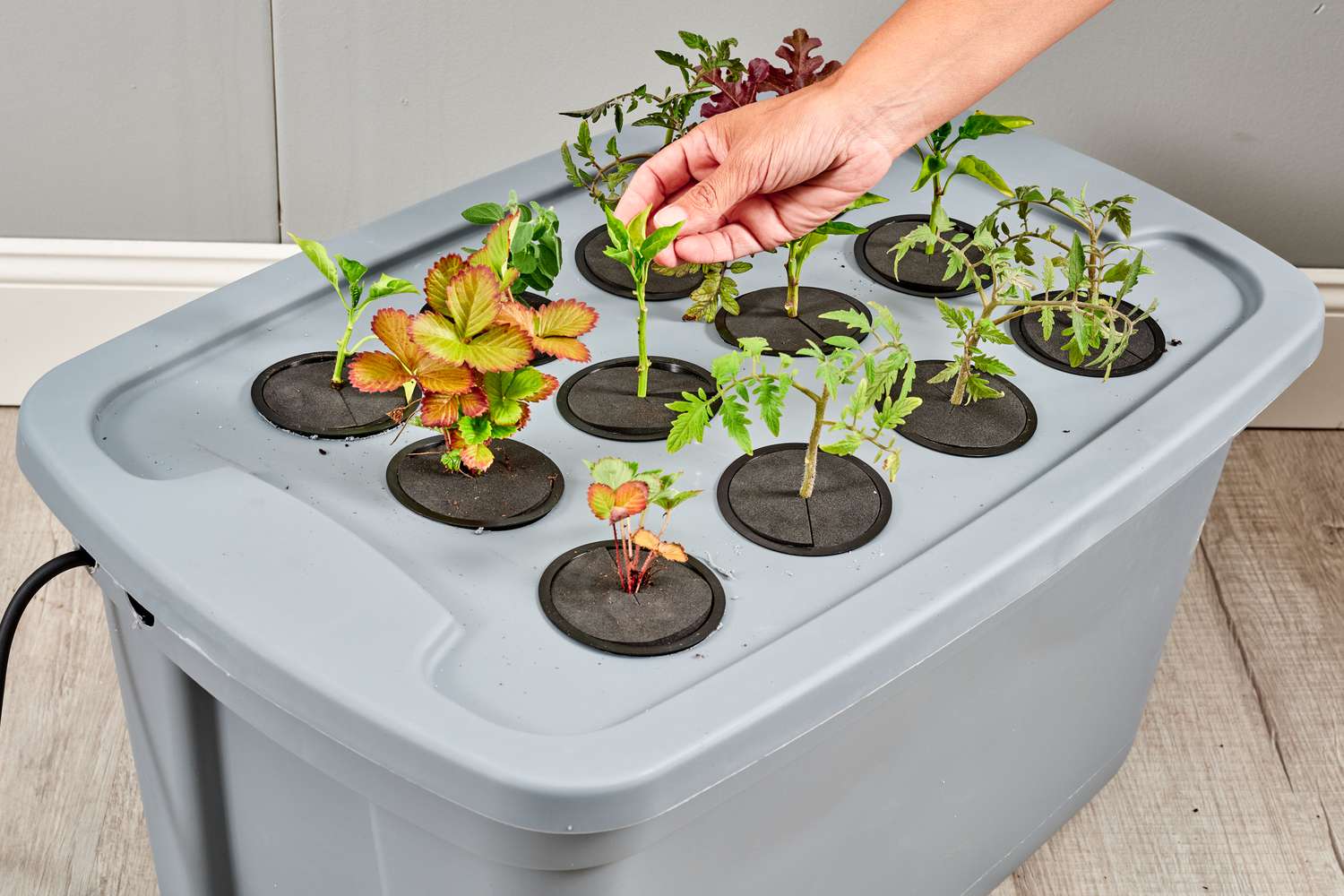To make a hydroponic garden, choose a suitable location and set up a growing system. Add a nutrient-rich solution and choose appropriate plants to cultivate in water rather than soil.
Hydroponic gardening is a popular method of growing plants without the use of traditional soil. Instead, plants are rooted in a nutrient-rich solution that provides all the necessary elements for growth. Hydroponics allows for optimal growth and higher yields by cultivating plants in a controlled environment.
Whether you’re a beginner or an experienced gardener, creating a hydroponic garden can be an exciting and rewarding venture. In this guide, we will explore the steps involved in setting up a hydroponic garden, from selecting the right location to choosing the best plants for your system. So let’s get started on your journey to successful hydroponic gardening.
Choosing The Right Location
When it comes to setting up a hydroponic garden, choosing the right location is crucial. The success of your plants depends on it. In this section, we will discuss two important factors to consider – whether you should set up your garden indoors or outdoors and the access to light. We will also cover temperature considerations to ensure your plants thrive in the optimal conditions.
Indoor Or Outdoor
- When deciding whether to set up your hydroponic garden indoors or outdoors, consider the available space and your climate.
- If you have limited space or live in an urban environment, an indoor garden might be the best choice. This allows you to utilize unused space and grow plants year-round.
- On the other hand, if you have ample outdoor space and live in an area with a favorable climate, an outdoor garden can provide natural light and ventilation.
Access To Light
Light is a crucial element for plant growth in a hydroponic garden. When choosing a location, consider the following:
- Ensure your garden receives adequate natural or artificial light for the type of plants you want to grow.
- If setting up an indoor garden, position it near a window or invest in grow lights to provide the necessary spectrum of light.
- For outdoor gardens, choose a location that receives direct sunlight for the majority of the day. Avoid areas with excessive shade that can hinder plant growth.
Temperature Considerations
| Plant | Optimal Temperature |
|---|---|
| Lettuce | 60-70°F (15-21°C) |
| Tomatoes | 70-85°F (21-29°C) |
| Basil | 70-80°F (21-27°C) |
| Cucumbers | 70-85°F (21-29°C) |
Temperature plays a vital role in the growth and development of plants in a hydroponic garden. Different plants have specific temperature requirements, so it is essential to consider these when choosing a location.
- Research the optimal temperature range for the plants you intend to grow.
- Ensure the chosen location can maintain the required temperature range without extreme fluctuations.
- Consider using additional heating or cooling mechanisms, like fans or heaters, to keep the temperature within the optimal range.

Credit: m.youtube.com
Setting Up The Hydroponic System
Setting up the hydroponic system is a crucial step in creating a successful indoor garden. This process involves carefully selecting the right type of hydroponic system, preparing the growing area, and installing the system components to ensure optimal plant growth. In this section, we will guide you through the essential steps to set up your hydroponic garden.
Selecting A Hydroponic System Type
When choosing a hydroponic system, consider factors such as available space, budget, and the types of plants you plan to grow. The most common types of hydroponic systems include Deep Water Culture (DWC), Nutrient Film Technique (NFT), and Ebb and Flow (Flood and Drain). Each system has its own advantages and challenges, so it’s essential to select one that aligns with your specific needs and resources. Research each system thoroughly before making a decision.
Preparing The Growing Area
Prior to installing the hydroponic system, prepare the growing area by ensuring it has adequate lighting and ventilation. Position the plants in an area where they can receive sufficient natural light or invest in artificial growing lights if needed. Additionally, ensure that the space is well-ventilated to facilitate proper air circulation, which is essential for plant health and growth. Clean the area thoroughly to maintain a sterile environment conducive to plant growth.
Installing The System Components
Once you have selected the appropriate system and prepared the growing area, you can begin installing the system components. This involves setting up the water reservoir, nutrient delivery system, growing containers, and any additional equipment required for the specific hydroponic system. Ensure that all the components are securely installed and properly connected to avoid any potential leaks or malfunctions. Follow the manufacturer’s instructions carefully to ensure the correct installation of each component.
Selecting The Right Plants
Selecting the right plants for your hydroponic garden is crucial for its success. Consider factors like light requirements, space availability, and growth characteristics to ensure healthy and thriving plants in your indoor garden.
Choosing Plants Suitable For Hydroponics
When it comes to setting up a hydroponic garden, selecting the right plants is crucial for a successful and thriving system. In traditional soil gardening, you have the luxury of choosing almost any type of plant, but in hydroponics, it’s important to consider plants that are well-suited for this soilless growing method. Here are a few factors to keep in mind when choosing plants suitable for hydroponics:
Considering Space And Growth Requirements
Hydroponic systems come in various sizes, from small setups in a kitchen or balcony to larger systems in greenhouses. The space available for your hydroponic garden will play a significant role in determining the types of plants you can grow. Consider the growth requirements of different plants, such as the amount of vertical space they need, how wide they spread, and the length of time they take to grow. This information will help you select plants that can thrive in the available space without overcrowding or inhibiting growth.
Key Considerations For Plant Selection
Here are some key factors to consider when selecting plants for your hydroponic garden:
1. Nutrient Efficiency: Plants that are efficient in nutrient uptake and utilization are ideal for hydroponics. Look for plants that have a relatively high yield per nutrient input, as this will help maximize the efficiency of your hydroponic system.
2. Disease and Pest Resistance: Choose plants that are known to be resistant to common diseases and pests in hydroponics. This will reduce the likelihood of plant health issues and the need for chemical treatments in your system.
3. Growth Rate: Consider the time it takes for a plant to reach maturity. Opting for plants with a shorter growth cycle can result in faster harvests and a more constant supply of fresh produce throughout the year.
4. Space Efficiency: Some plants, such as leafy greens and herbs, have compact growth habits. These plants are well-suited for hydroponics as they can be grown in close proximity without inhibiting each other’s growth.
5. Water and pH Requirements: Different plants have varying water and pH requirements. Ensure that the plants you choose have similar water and pH needs to maintain a stable and harmonious growing environment.
In summary, selecting the right plants for your hydroponic garden involves considering their nutrient efficiency, disease resistance, growth rate, space efficiency, and water/pH requirements. By keeping these factors in mind, you can choose plants that will thrive in your hydroponic system and provide you with a bountiful harvest of fresh, healthy produce.
Monitoring And Maintaining The Garden
Once you have set up your hydroponic garden, proper monitoring and maintenance are crucial to ensure the health and productivity of your plants. By regularly checking nutrient levels and pH, watering consistently, and taking preventive measures against pests and diseases, you will be able to keep your hydroponic garden thriving. Let’s explore each aspect in more detail.
Nutrient And Ph Monitoring
Regularly monitoring nutrient levels and pH is essential to ensure your plants receive the correct balance of nutrients and maintain optimal growth. Nutrient solutions in a hydroponic system can be easily adjusted as needed to meet the specific requirements of different plants.
Here are a few key steps to effectively monitor and maintain nutrient and pH levels in your hydroponic garden:
- Test the nutrient solution at least once a week using a pH meter or test kit to determine the acidity or alkalinity of the solution.
- Adjust the pH level as necessary by adding small amounts of pH adjustment solutions to bring it to the desired range for your plants.
- Regularly check the levels of essential nutrients such as nitrogen, potassium, and phosphorus using an appropriate testing kit.
- Adjust the nutrient solution by adding nutrient supplements to maintain the optimal nutrient balance.
- Monitor the overall health and appearance of your plants for signs of nutrient deficiencies or excesses, such as yellowing leaves or stunted growth, and make necessary adjustments.
Watering The Plants
Proper watering is crucial for the health and growth of your plants in a hydroponic garden. Since there is no soil to retain moisture, you need to ensure that your plants receive an adequate water supply at regular intervals.
Consider the following steps for effective watering in your hydroponic garden:
- Determine the water requirements of your specific plants based on their stage of growth and environmental conditions.
- Set up a reliable irrigation system, such as a drip system or an ebb and flow system, to provide a consistent water supply.
- Monitor the water levels in your hydroponic system regularly to prevent drying out or waterlogging.
- Water your plants at the appropriate times and intervals to maintain consistent moisture levels and prevent stress.
- Observe the foliage and root health of your plants for any signs of over or under-watering, such as wilting or root rot, and adjust your watering routine accordingly.
Preventing Pests And Diseases
In any garden, pests and diseases can pose a threat to the health and productivity of your plants. In a hydroponic garden, it is equally important to take preventive measures to protect your plants from such issues.
Here are a few effective strategies to prevent pests and diseases in your hydroponic garden:
- Keep your hydroponic system clean and free from debris that can harbor pests or diseases.
- Regularly inspect your plants for any signs of pests such as aphids, mites, or whiteflies. Use sticky traps, natural predators, or organic insecticides as necessary.
- Practice good hygiene by disinfecting tools and equipment used in your hydroponic garden to prevent the spread of diseases.
- Ensure proper ventilation and air circulation to discourage the growth of molds and mildews.
- Provide adequate spacing between plants to minimize the risk of overcrowding, which can lead to the spread of diseases.
By diligently monitoring and maintaining your hydroponic garden, you will be able to enjoy healthy and thriving plants all year round. Remember to keep an eye on nutrient and pH levels, water consistently, and implement preventive measures against pests and diseases. Happy hydroponic gardening!
Harvesting And Enjoying Your Hydroponic Garden
Discover the art of making a hydroponic garden for a bountiful harvest. Learn how to create and enjoy the benefits of this innovative gardening method, without soil, for a more sustainable and efficient way to grow your own fresh produce.
Creating a hydroponic garden can be a fulfilling and sustainable way to grow fresh produce. Once your plants have matured, it’s time to reap the rewards and relish the fruits of your labor. Harvesting and enjoying your hydroponically grown vegetables and herbs is a delightful experience that brings the satisfaction of homegrown goodness to your table.
Harvesting Techniques And Tips
When it comes to harvesting your hydroponic garden, timing is key. Ensure that your crops are at their peak ripeness before picking. Carefully inspect the plants and use clean, sharp scissors or shears to cut the produce from the plant without damaging the remaining foliage. Handle the harvested fruits and vegetables gently to avoid bruising or damage.
Prepare your hydroponic harvest by washing the produce thoroughly with cool water to remove any dirt or residue. Store the freshly picked produce in a cool, dark place to maintain its quality.
Preparation And Cooking Suggestions
Hydroponically grown vegetables and herbs are known for their exceptional flavor and nutritional value. Unlock the full potential of your harvest by incorporating them into your cooking. Consider creating an array of enticing dishes such as flavorful salads, refreshing smoothies, or aromatic stir-fries.
When it comes to cooking hydroponically grown produce, keep it simple to allow the natural flavors to shine. Lightly steaming or sautéing vegetables and adding fresh herbs to dishes can elevate the taste and health benefits of your meals. Experiment with different recipes to fully enjoy the bountiful yields of your hydroponic garden.
In conclusion, harvesting and enjoying the results of your hydroponic garden is truly a gratifying experience, from the moment you pluck the ripe produce to the delight of savoring the freshness in your culinary creations.
/building-a-hydroponic-garden-5086086-12-40ef05a8e3794202b7643621d2a250e9.jpg)
Credit: www.thespruce.com

Credit: www.squaremilefarms.com
Conclusion
Creating a hydroponic garden is an innovative and rewarding way to grow plants. The method offers many advantages, including efficient use of space, water, and nutrients. By following the steps outlined in this guide, you can enjoy the benefits of a thriving hydroponic garden in your own home.
Start your indoor garden today and experience the joy of growing your own fresh produce.








